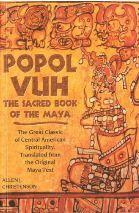It was more than 2,500 years ago when the non-theistic faith of Buddhism was founded by Siddhartha Guatama, which today we know as “the Buddha.” From his teachings of encouraging avoidance of self-indulgence and self-denial, it is this way of life that allows a man to become enlightened. As the Buddha taught his findings of enlightenment orally to those that would listen, there was never a body of Buddhist scripture written down and preserved, until about 80 B.C.E. It was this moment in time for which almost all of Buddhist monks and scholars met together in what would be called the Great Council at Anuradhapura, the capital of Sri Lanka. The book Awakening, by Patrick Bresnan, states, “...they were there for the purpose of formally establishing an authentic body of Buddhist scripture” (Bresnan 243). These followers of Buddhism had now created the Pali Canon, a collection of scriptures that makes up the great tradition of Theravada Buddhism. But like every tradition, there come opposing viewpoints. These oppositionists created the second great tradition of Buddhism, Mahayana Buddhism. Influential, larger, and more favored by the people, Mayahaya Buddhism would take over reign for centuries until Theravada would again make an appearance in modern times.
 |
| Thai Buddhist Monk |
When the Buddhist monks and scholars created the scriptures for Theravada Buddhism, we ask ourselves what Theravada means. Bresnan states, “... the first great organized movement within Buddhism, is known by the name Theravada… Theravada literally means “teachings (doctrine) of the elders,” but in more everyday language, we could translate it simply as “the orthodox tradition”” (Bresnan 251-252). Followers of this type of Buddhism believed that through our own efforts, we could attain self-liberation. And the road to enlightenment is through dedicating one’s entire life to a monastic lifestyle. More conservative of the two great traditions, Theravada followers believed that their way of Buddhism was more aligned with the Buddha’s teachings. However, as we see with the formation of Mahayana Buddhism, those with different viewpoints create their own way of life.
 |
| Statues of the Buddha in Mahayana Tradition |
Works Cited:
Bresnan, Patrick. Awakening: an Introduction to the History of Eastern Thought. Routledge, Taylor & Francis Group, 2018.
Permalinks Cited:
“Mahayana Buddhism and Tradition.” And Tradition,
www.burmese-art.com/blog/mahayana-buddhism.
Why Do Thai MONKS Wear ORANGE Robes? 13 Nov. 2019, paramai.net/2017/05/04/why-dothaimonks-wear-orange-robe/.



No comments:
Post a Comment